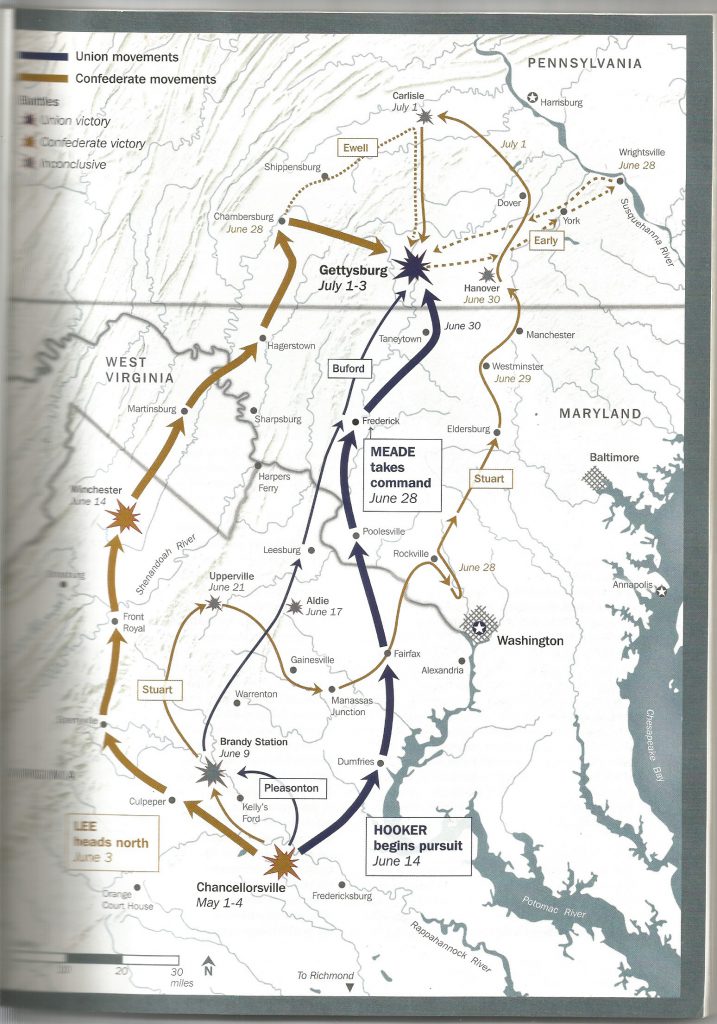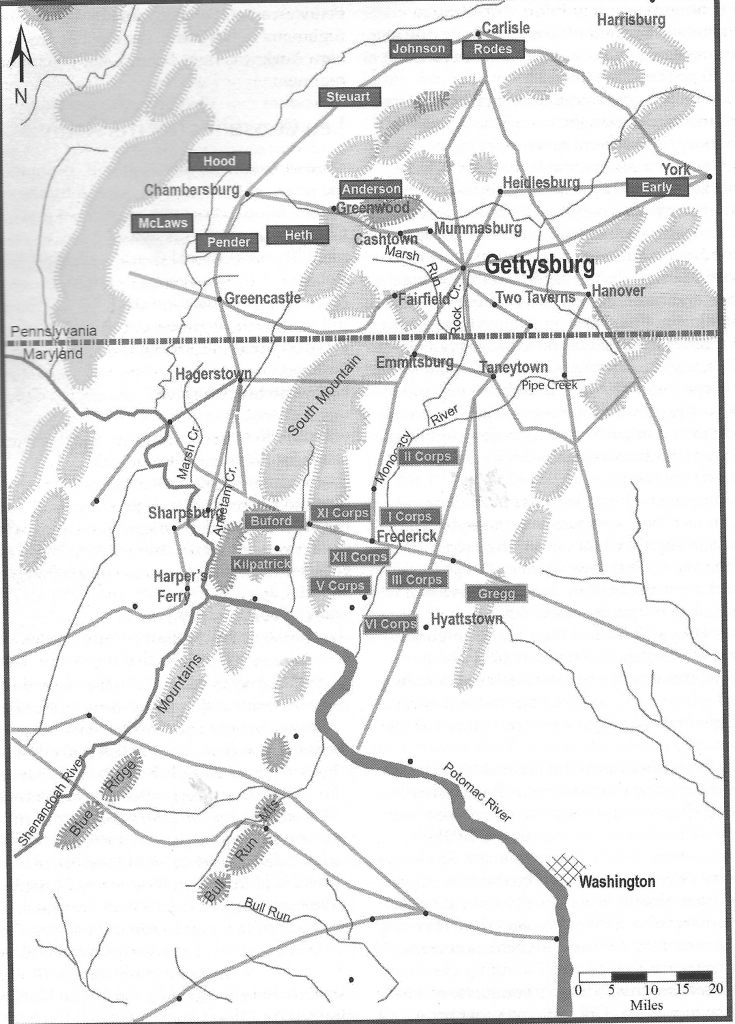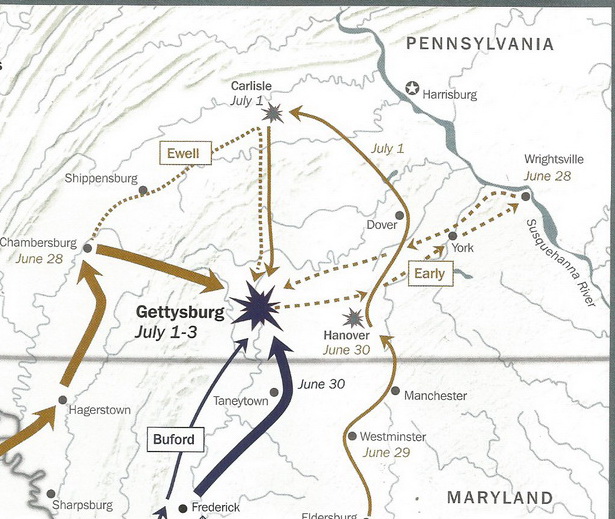Lee had his three Corps (see Section 3a on the Organization of the Armies) moving north using the South Mountain as a shield to camouflage their movements and protect against any flanking attacks during this move. He sent his Cavalry led by MG J.E.B. Stuart to screen and protect his flank by moving up the east side of that mountain range.
It was a dangerous time for the Army of Northern Virginia (ANV) being strung out for dozens of miles in marching columns with hundreds of wagons carrying vital supplies sandwiched between the infantry formations. But there were only a handful of passes through those mountains that would enable Union forces to threaten him. Those were easily guarded by a small number of troops sent to block them. Plus Stuart was protecting that right flank.

A key meeting took place near Chambersburg on 26 June. LTG Ewell’s Corps was at the vanguard of the Army and had just made the turn at the north end of South Mountain. The Army was beginning to move east. At the evening war council, he ordered Ewell to take two of his divisions north to Carlisle PA. There was a Union depot there that could provide invaluable supplies. MG Early was to separate from the rest of Ewell’s corps and march straight east towards York.

Lee’s plan was to have Ewell attack Harrisburg with Early providing a screening force to prevent any Union reinforcements from moving up from the south. Early’s route took him through the small crossroads town of Gettysburg on 27 June.
Somewhat unexpectedly Stuart’s cavalry was not there to meet him. In fact, Lee had not heard from Stuart for over a week and he was getting concerned, but he couldn’t worry about that now.
So on the morning of 30 June, Ewell was just outside Carlisle and Early a day’s march east of Gettysburg. LTG A.P. Hill’s Corps was approaching Cashtown roughly halfway between Chambersburg and Gettysburg. The roads leading north from these two small towns would convey the Rebel Army to victory deep inside Pennsylvania. All was going according to plan; except for one thing!

Lee had no idea where the Union forces were. He was somewhat comforted by the fact that they were likely as blind as he was. By moving up beside the mountain and cutting telegraph wires as he went, he likely had masked the precise location of his force. But now that they were turning east where there were more towns that mask was about to come off. If there were any great threat, Stuart would surely have sent word. So in a sense, no news was good news.
LTG Longstreet’s Corps was third in line and was just now reaching the north end of the mountain range. MG Pickett’s Division was providing the rear guard. He was a full day’s march behind Hill.
On the evening if 30 June, GEN Lee went to sleep in a farm house near Cashtown just behind Hill’s corps. All was going according to plan.
Attacking the Far North: A Civil War Tale
When Lee crossed the Potomac into Maryland and then to Pennsylvania, the northernmost incursion of Confederate troops was by Ewell’s division at Carlisle PA enroute to Harrisburg before he was recalled to Gettysburg.
But that wasn’t the northernmost battle of the war.
Thousands of Green Mountain Boys had answered the call to arms and were fighting in the South, but no place could seemingly have been farther from the ‘front’ than Vermont. Yet it was the scene of a ‘battle’ of sorts = the northernmost of the war. In October 1864, a group of young men arrived in the town of St. Albans (barely 15 miles from the Canadian border). They straggled in in 2s and 3s and checked into various rooms around the city. After a few days of scouting the area, they assembled in a tavern and revealed themselves as Confederate soldiers.
In what proved to be a comedy of errors, they robbed the town’s banks; netting about $88,000. They made their escape on stolen horses after setting a number of fires around the town to keep the townsfolk busy.
The Canadian authorities were alerted and soon arrested the ringleaders. They were tried for the crime of “violating the neutrality of Canada” but were acquitted when they produced orders for Richmond directly the ‘attack’. It is still widely speculated that the ‘orders’ were dispatched in retrospect thereby identifying these men as Confederate soldiers. The money they stole was returned to the town.
And so, was the Battle of St. Albans that you likely didn’t read about in school……
